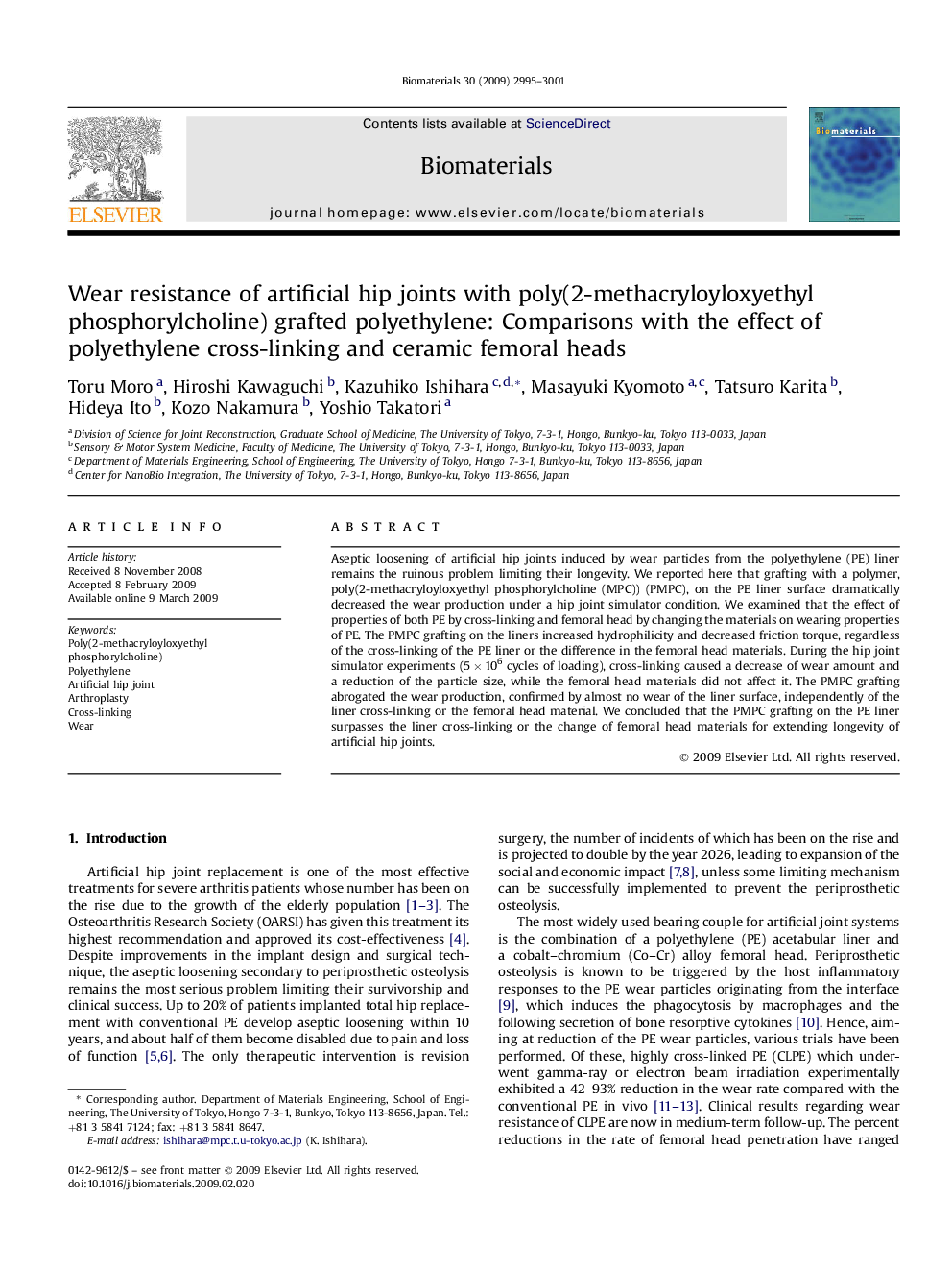| کد مقاله | کد نشریه | سال انتشار | مقاله انگلیسی | نسخه تمام متن |
|---|---|---|---|---|
| 8644 | 601 | 2009 | 7 صفحه PDF | دانلود رایگان |

Aseptic loosening of artificial hip joints induced by wear particles from the polyethylene (PE) liner remains the ruinous problem limiting their longevity. We reported here that grafting with a polymer, poly(2-methacryloyloxyethyl phosphorylcholine (MPC)) (PMPC), on the PE liner surface dramatically decreased the wear production under a hip joint simulator condition. We examined that the effect of properties of both PE by cross-linking and femoral head by changing the materials on wearing properties of PE. The PMPC grafting on the liners increased hydrophilicity and decreased friction torque, regardless of the cross-linking of the PE liner or the difference in the femoral head materials. During the hip joint simulator experiments (5 × 106 cycles of loading), cross-linking caused a decrease of wear amount and a reduction of the particle size, while the femoral head materials did not affect it. The PMPC grafting abrogated the wear production, confirmed by almost no wear of the liner surface, independently of the liner cross-linking or the femoral head material. We concluded that the PMPC grafting on the PE liner surpasses the liner cross-linking or the change of femoral head materials for extending longevity of artificial hip joints.
Journal: Biomaterials - Volume 30, Issue 16, June 2009, Pages 2995–3001